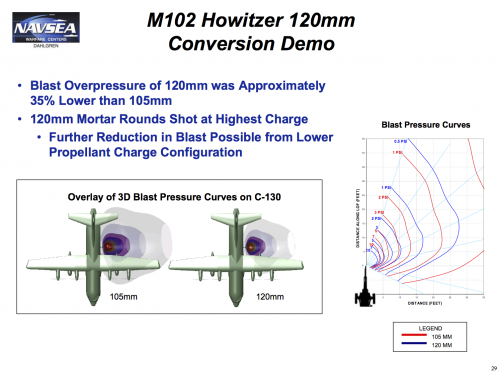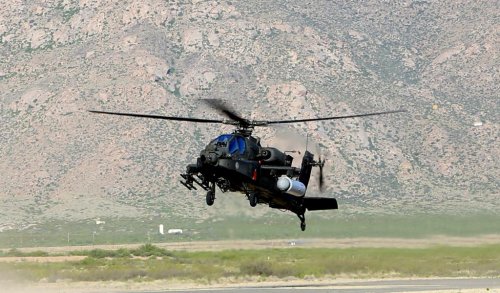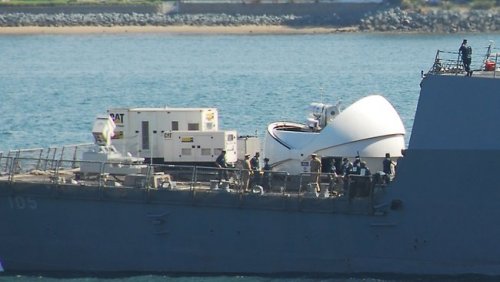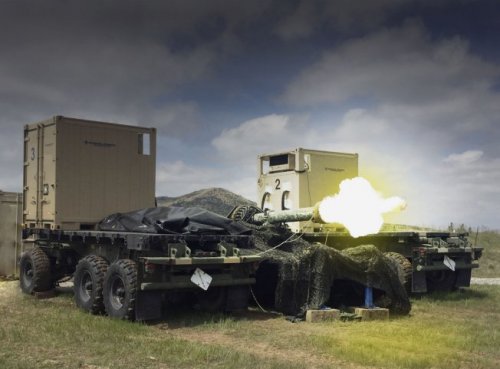General Atomics Electro Magnetic Systems (GA-EMS) is assembling a 10 MJ railgun in preparation for shipping to Utah, where the company will begin readying the weapon system for testing in 2018.
In addition, GA-EMS announced in May that it had successfully tested its hypersonic projectile, which has been fitted with an enhanced guidance electronics unit (GEU) containing a new battery configuration. The tests were conducted using GA-EMS' 3 MJ Blitzer railgun system at the US Army's Dugway Proving Ground in Utah.
During the test, GA-EMS demonstrated a continuous two-way datalink that enables target information between the in-flight projectile and a ground station to be updated.
"Everything communicated, it was still operating when it landed 7 km away from our launch point – and it communicated in-flight, which is exactly what we were trying to achieve," GA-EMS president Scott Forney told Jane's .
Besides the GEU tests, the company stated that it had also demonstrated a new lightweight composite sabot, achieving successful sabot separation and maintaining in-bore structural integrity at high acceleration levels.
The projectile that will be launched later this year from the 10 MJ railgun will be twice as long as that fired from the 3 MJ gun, Forney noted.
For the past two years GA-EMS has been undertaking risk reduction testing on its 3 MJ gun. While the testing was to prove the railgun concept and pulse power capability, the company was unable to test their highly manoeuvrable projectile – which was loaded with electronics – because the 3 MJ launcher was too small, Forney said.
To work around that, the company created what Forney called a "bus round"....
.
.
.
.
The payload and electronics fit into a projectile about the size of two mini Coca-Cola cans (each about .22 litre in size), he added, noting that it was challenging to fit the technology into such a small form factor.
"Fitting it in to a [Coca-Cola] can and [it] is going through all these phase stages in this high [electromagnetic] field, that was the big challenge," Forney said.
The design requirement for the projectile speed is Mach 6; however, the testing being undertaken by GA-EMS with the 3 MJ gun uses a slightly lower speed, as the projectile was developed as an aerodynamic round, rather than a heavy round with integral electronics and steering control systems, Forney noted.
"We could not get the full speed and get the full G-value of the shock of trying to launch it that quickly," he said. "When we weighted down this bus round, it was slightly less than Mach 6 so we could get the full G-value on it, which we thought was more important to prove."
GA-EMS will initially test its 10 MJ launcher using slugs to make sure the railgun has full integrity before transitioning to aerodynamic rounds, Forney added.
He expects GA-EMS to achieve a launch at full speed from the 10 MJ system in October.
....
In early 2018, GA-EMS expects to have demonstrated the ability to use a multi-mission medium-range gun – what the company terms a 10 MJ launcher – and will have shown command guidance of the projectile to a moving target.
GA-Aeronautical Systems is developing a target that will look like a cruise missile, which will be used for the command guidance demonstration.
The company continues to work on reducing the railgun's pulse power system. Forney said that when the company completes its fifth-generation pulse power system, it will have one-eighth of the footprint of the current system being used at Naval Surface Warfare Center Dahlgren Division, Virginia, at which the USN's Office of Naval Research is conducting railgun work.




